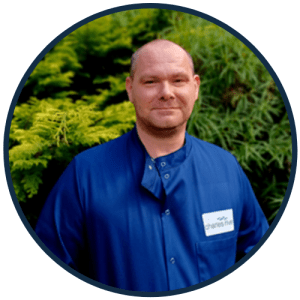Bioanalytical support for AAV therapies
Specialized bioanalysis drives AAV therapies, ensuring safety, gene expression tracking and robust clinical translation for gene therapies.
Gene therapy has evolved since the first approved drug in 2004. Since then, AAV therapies have gained traction in the gene therapy market with the first approved AAV-based drug in 2013. With these new modalities, the need for specialized bioanalytical support becomes increasingly critical and uses traditional and un-traditional assays. These assessments are crucial for understanding the vector’s safety profile and therapeutic potential.
This webinar will explore the expanding role of bioanalysis in AAV therapies, focusing on biodistribution, transgene expression, immunogenicity and ELISpot. With AAVs becoming more niche, there is a growing demand for detailed analysis to understand their safety profiles and their broader applications across different therapeutic areas. This discussion will highlight the significant contributions of bioanalytical methods to the development of AAV therapies, briefly consider important regulatory recommendations on assay validation and finally, explore how to approach these methods to be successful.
What will you learn?
- Understanding bioanalysis for AAV therapies: learn how bioanalytical methods like qPCR, LBA and immunohistochemistry are used to evaluate biodistribution, transgene expression and immunogenicity.
- Safety and efficacy in preclinical studies: gain insights on how adverse effects, gene expression and off-target impacts are monitored to predict human responses and guide dose selection.
- Expanding role of bioanalysis in gene therapy: discover how bioanalysis supports emerging therapeutic applications as AAV therapies become more niche and complex.
- Comprehensive techniques for clinical translation: explore how qPCR, ELISpot and LBA assessments contribute to the successful transition from laboratory studies to clinical trials.
- Advanced therapeutic applications: learn the importance of detailed analysis for assessing the broader safety profiles of AAV therapies across different therapeutic areas.
Who this may interest?
- Biotech and pharma professionals involved in gene therapy development
- Preclinical and clinical researchers focused on gene therapy safety
- Bioanalytical scientists seeking advanced methods for AAV therapy assessments
- Regulatory and quality assurance teams in biotech looking for insights into clinical trial readiness
- Drug developers working on translating gene therapies from lab to clinical applications
Speakers
 Catherine Spickler
Catherine Spickler
Associate Director, Immunology
Charles River Laboratories
Catherine started her career in the pharmaceutical industry over 25 years ago, focusing on early drug discovery. She started her path at Charles River (MA, USA) 5 years ago as a pre-clinical safety Immunology Scientist specializing in molecular biology. She rapidly evolved to being one of the Immunology department Associate Directors and helped build what is now the Molecular Biology team at our Laval site in Canada. As a subject matter expert in molecular biology, she drives the scientific harmonization effort across the Charles River global organization.
 John Cook
John Cook
Senior Principal Research Scientist, Immunology, Bioanalysis & Biomarkers
Charles River Laboratories
John began his career at Charles River (MA, USA) in 2006 when his focus was on routine hematology and serum chemistry testing to support a vast array of studies in both non-clinical and clinical phases of drug development. As a subject matter expert in the field of LBA to support both TK/PK and immunogenicity endpoints, John currently drives regulatory and scientific excellence in this field at our site in Edinburgh in the UK. At a global level, John leads efforts to align and harmonize best practices in the LBA TK/PK field.
This webinar was recorded on the 11th of November.
In association with

